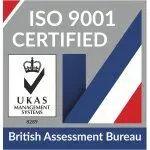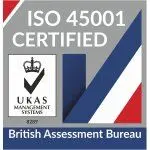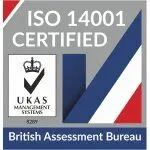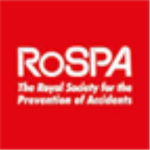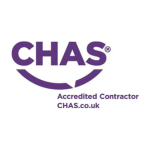
Colour Coding in Commercial Cleaning
Overview
Introduction to colour coding in commercial cleaning
Colour coding in commercial cleaning is an important practice that helps maintain hygienic and organized environments. It involves assigning specific colours to different cleaning tools and areas to prevent cross-contamination. The use of colour coding ensures that cleaning materials used in one area are not used in another, reducing the risk of spreading germs and bacteria. This system also helps cleaners easily identify and locate the right tools for each task, improving efficiency and productivity. By implementing colour coding in commercial cleaning, businesses can create safer and healthier spaces for their employees and customers.
Importance of colour coding in maintaining cleanliness
Colour coding is an essential practice in maintaining cleanliness in commercial cleaning. It involves assigning specific colours to different cleaning tools and areas to prevent cross-contamination. By using colour-coded equipment, such as mops, cloths, and buckets, cleaning staff can easily identify which tools are designated for specific areas or tasks. This helps to prevent the spread of germs and bacteria from one area to another, ensuring a hygienic and safe environment for everyone. Additionally, colour coding promotes efficiency and organization in cleaning operations, as it minimizes confusion and saves time in locating the right tools. Overall, the importance of colour coding in commercial cleaning cannot be overstated, as it plays a crucial role in maintaining cleanliness and hygiene standards.
Benefits of implementing colour coding systems
Implementing colour coding systems in commercial cleaning offers several benefits. Firstly, it helps to prevent cross-contamination by assigning specific colours to different areas or tasks. This ensures that cleaning tools and equipment are not used interchangeably, reducing the spread of germs and bacteria. Secondly, colour coding promotes efficiency and productivity by making it easier for cleaners to locate the right tools and materials quickly. This saves time and allows for a more streamlined cleaning process. Additionally, colour coding enhances safety in the workplace by clearly identifying hazardous or restricted areas. This helps to prevent accidents and ensures that the appropriate cleaning procedures are followed. Overall, implementing colour coding systems in commercial cleaning is a simple yet effective way to improve cleanliness, organization, and safety.
Types of Colour Coding Systems
Zone-based colour coding system
A zone-based colour coding system is an essential aspect of commercial cleaning. It is a method of organizing cleaning tools and equipment based on different areas or zones within a facility. Each zone is assigned a specific color, such as red for high-risk areas, yellow for moderate-risk areas, and green for low-risk areas. This system helps to prevent cross-contamination and ensures that cleaning tools are used in the appropriate areas. By implementing a zone-based colour coding system, commercial cleaning companies can maintain a high level of cleanliness and hygiene in various facilities.
Task-based colour coding system
A task-based colour coding system is an essential component of any effective commercial cleaning program. This system involves assigning specific colours to different cleaning tasks, such as red for high-risk areas, green for food preparation areas, and blue for general cleaning. By using this colour coding system, cleaning staff can easily identify which tools and equipment to use for each task, reducing the risk of cross-contamination and promoting a hygienic environment. Additionally, this system helps streamline cleaning processes, ensuring that all areas are thoroughly cleaned and maintained to the highest standards. Implementing a task-based colour coding system is a simple yet effective way to enhance the efficiency and effectiveness of commercial cleaning operations.
Material-based colour coding system
A material-based colour coding system is an effective method used in commercial cleaning to prevent cross-contamination. This system assigns specific colours to different cleaning tools and equipment based on the materials they are designed to clean. For example, red may be used for cleaning high-risk areas such as toilets and urinals, while blue may be used for general surface cleaning. By using this colour coding system, cleaning staff can easily identify which tools to use for specific tasks, reducing the risk of spreading germs and maintaining a hygienic environment.
Implementing Colour Coding in Commercial Cleaning
Developing a colour coding plan
When developing a colour coding plan for commercial cleaning, it is important to consider the specific needs and requirements of the facility. The plan should be designed to promote cleanliness, prevent cross-contamination, and ensure the safety of both employees and customers. Each colour should be assigned to a specific cleaning task or area, such as red for high-risk areas, blue for general cleaning, and green for food preparation areas. By implementing a colour coding plan, commercial cleaning companies can streamline their operations, improve efficiency, and maintain a hygienic environment for all stakeholders.
Training staff on colour coding procedures
Training staff on colour coding procedures is crucial in maintaining a high standard of cleanliness and hygiene in commercial cleaning. By implementing a comprehensive training program, employees can learn the importance of using specific colours for different cleaning tasks, such as red for high-risk areas and green for food preparation areas. This ensures that cross-contamination is minimized and that cleaning protocols are followed consistently. Training staff on colour coding procedures also promotes accountability and professionalism, as employees understand their role in maintaining a safe and sanitary environment for clients and customers. With proper training, staff members can confidently handle cleaning tasks and contribute to the overall success of the commercial cleaning operation.
Monitoring and maintaining colour coding standards
Monitoring and maintaining colour coding standards is crucial in commercial cleaning. By adhering to these standards, cleaning staff can ensure the safety and hygiene of the premises. Regular monitoring helps identify any deviations or inconsistencies in the colour coding system, allowing for timely corrective actions. It also helps in maintaining the overall cleanliness and organization of the cleaning process. Through effective monitoring and maintenance, businesses can uphold the highest standards of cleanliness and create a healthy environment for employees and customers.
Best Practices for Colour Coding in Commercial Cleaning
Using consistent colours and labels
Using consistent colours and labels is essential in commercial cleaning. By assigning specific colours and labels to different areas or types of cleaning tasks, it becomes easier to identify and prioritize the tasks at hand. This system not only improves efficiency but also helps in maintaining a clean and organized environment. It allows cleaning staff to quickly locate the necessary tools and supplies, reducing the time spent on searching. Moreover, consistent colours and labels create a sense of professionalism and reliability, making it easier for clients and visitors to trust the cleaning service provider. Overall, implementing a colour coding and labelling system in commercial cleaning operations is a simple yet effective way to streamline processes and enhance the overall cleaning experience.
Regularly inspecting and replacing colour-coded equipment
Regularly inspecting and replacing colour-coded equipment is an essential practice in commercial cleaning. By conducting routine inspections, cleaning professionals can identify any signs of wear or damage on the equipment, ensuring that it remains in optimal condition. This proactive approach helps to maintain the effectiveness and efficiency of the colour coding system, as damaged or worn-out equipment can compromise the integrity of the system. Additionally, regular replacement of colour-coded equipment helps to prevent cross-contamination and maintain hygiene standards. By ensuring that each colour-coded item is in good working condition, cleaning professionals can effectively segregate cleaning tools and reduce the risk of spreading germs and bacteria. Overall, regularly inspecting and replacing colour-coded equipment is crucial for maintaining a clean and hygienic environment in commercial settings.
Updating colour coding systems based on feedback and industry standards
Updating colour coding systems based on feedback and industry standards is crucial in the field of commercial cleaning. As the cleaning industry evolves and new cleaning products and techniques are introduced, it is important to adapt colour coding systems to ensure the highest level of cleanliness and safety. Feedback from cleaning professionals and industry experts provides valuable insights into the effectiveness of current colour coding systems and helps identify areas for improvement. Additionally, staying up-to-date with industry standards ensures that colour coding systems align with best practices and meet regulatory requirements. By regularly reviewing and updating colour coding systems, commercial cleaning companies can enhance efficiency, reduce cross-contamination risks, and maintain a hygienic environment for both employees and clients.
Challenges and Solutions in Colour Coding
Resistance to change and lack of awareness
Resistance to change and lack of awareness are common challenges when implementing colour coding in commercial cleaning. Many employees may be resistant to adopting new practices, especially if they have been accustomed to a different system for a long time. Additionally, there may be a lack of awareness about the benefits of colour coding and how it can improve hygiene and prevent cross-contamination. It is important for organizations to address these challenges by providing training and education on the importance of colour coding, as well as emphasizing the positive impact it can have on cleanliness and safety in the workplace.
Ensuring compliance and consistency
Ensuring compliance and consistency in commercial cleaning is essential for maintaining high standards of cleanliness and hygiene. One effective way to achieve this is through the use of colour coding. By assigning specific colours to different cleaning tasks and areas, such as red for high-risk areas and blue for general cleaning, it becomes easier for cleaning staff to identify and use the right tools and products for each task. This not only helps to prevent cross-contamination but also promotes efficiency and productivity. Additionally, colour coding provides a visual cue for clients and visitors, reassuring them that the cleaning process is thorough and systematic. Overall, implementing a colour coding system in commercial cleaning operations is a simple yet powerful tool for ensuring compliance and consistency.
Addressing cross-contamination risks
In order to address cross-contamination risks in commercial cleaning, it is essential to implement effective colour coding systems. These systems involve assigning specific colours to different cleaning tools and equipment, such as mops, buckets, and cloths, based on the areas they are used in. This helps to prevent the transfer of germs and bacteria from one area to another, reducing the risk of spreading infections. By clearly defining and adhering to colour coding protocols, cleaning staff can ensure that the right tools are used in the right areas, promoting a hygienic and safe environment for employees and customers alike.
Conclusion
Summary of the importance and benefits of colour coding
Colour coding is an essential practice in commercial cleaning that involves assigning specific colors to cleaning tools and equipment for different areas or tasks. This system helps to prevent cross-contamination and maintain a hygienic environment. By using color-coded tools, it becomes easier for cleaning staff to identify and use the correct equipment in specific areas, such as restrooms, kitchens, or high-touch surfaces. This practice not only enhances cleanliness but also reduces the risk of spreading germs and bacteria. Additionally, color coding promotes efficiency and productivity by streamlining the cleaning process and minimizing errors. Overall, implementing a color coding system in commercial cleaning is crucial for ensuring a safe and sanitary environment.
Encouragement to implement colour coding in commercial cleaning
Implementing colour coding in commercial cleaning can provide numerous benefits. Firstly, it helps to prevent cross-contamination by assigning specific colours to different areas or tasks. This ensures that cleaning tools and equipment used in one area are not used in another, reducing the risk of spreading germs and bacteria. Secondly, colour coding promotes efficiency and organization by making it easier for cleaning staff to locate the right tools and products for each task. With a quick glance, they can identify which colour corresponds to a specific area or cleaning requirement. Lastly, implementing colour coding in commercial cleaning demonstrates a commitment to hygiene and safety, which can enhance the reputation of a business. It shows clients and customers that the establishment takes cleanliness seriously and is dedicated to providing a clean and healthy environment. Overall, colour coding is a simple yet effective strategy that can greatly improve the cleanliness and safety standards in commercial settings.
Final thoughts on the future of colour coding in the industry
In conclusion, the use of colour coding in the commercial cleaning industry has proven to be an effective and efficient method for preventing cross-contamination and promoting cleanliness. As businesses continue to prioritize hygiene and sanitation, colour coding will likely play an even more significant role in the future. By implementing a comprehensive colour coding system, companies can ensure that their cleaning processes are standardized, organized, and easily understood by their staff. This not only improves overall cleanliness but also enhances the safety and well-being of employees and customers. As the industry evolves, it is crucial for businesses to stay updated on the latest colour coding practices and incorporate them into their cleaning protocols. By doing so, they can maintain a clean and healthy environment for everyone involved.

